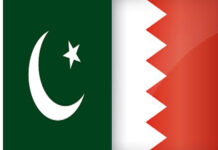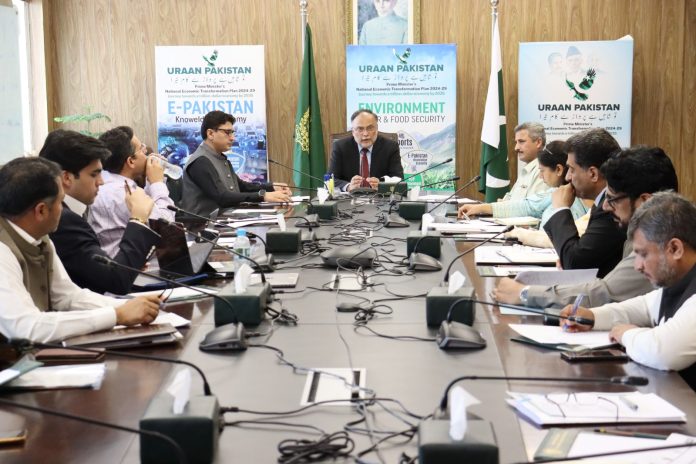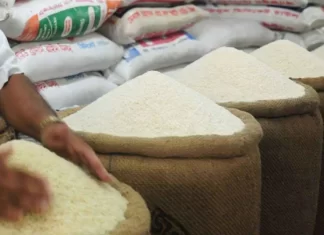Minister for Planning, Development and Special Initiatives Ahsan Iqbal directed all relevant ministries to form dedicated working groups, develop cluster-wise business plans, define measurable targets, and submit comprehensive execution frameworks in two weeks to achieve the $60 billion export target and transform Pakistan into a $1 trillion economy by 2035.
Planning Minister on Monday chaired a meeting to review Pakistan’s export-led growth strategy under the “Uraan Pakistan” program. It was the maiden bimonthly meeting of the first “E”—Exports—from the five Es framework that defines the government’s roadmap to transform Pakistan into a $1 trillion economy by 2035.
He emphasised a national target of $60 billion in export growth over the next five years, instructing that this must be treated as a mission-critical national priority. “This is not business as usual. We need to adopt a radically different approach – a breakaway from the past. This is a 100-meter sprint. We must run faster than our competitors to capture global markets,” the minister said.
He stressed the importance of data-driven planning and value chain development, instructing the senior officials of the Planning Ministry to immediately undertake a comprehensive data analytics exercise to evaluate domestic strengths and map global market trends.
“Unless we have exact, precise data, our resources will be wasted. We must sit at the drawing board and align our capacities with global demand,” he added.
The minister said export development was not merely about opening LCs and shipping containers – it required building a complete ecosystem, including regulatory compliance, certification, branding, and integration with global supply chains.
He stated, “Made in Pakistan” must become synonymous with quality, productivity, and sustainability.
To this end, the planning ministry is facilitating the development of eight strategic clusters identified as anchors of Pakistan’s future export growth including Agriculture and Agro-based Exports; Industry and Manufacturing (including textiles, engineering, pharmaceuticals); Services (excluding IT, including financial services, medical tourism, consultancy); Information Technology and Digital Services; Mining and Minerals; Manpower Exports and Overseas Employment; Blue Economy (Maritime Sectors); and Creative Industries (media, arts, and culture).
Each cluster has been assigned to a respective ministry with convening responsibilities to prepare detailed, inter-ministerial business plans for each product and sub-sector within their domains.
In his remarks, Ahsan Iqbal emphasised the need for compliance with international environmental and quality standards, including certifications required for preferential trade regimes such as GSP+.
Calling the challenge an economic emergency, he urged the Ministry of Commerce to disaggregate the $60 billion target across the eight sectors, propose practical policy measures, and coordinate closely with provincial and private stakeholders.
“This requires a national effort. Just as our Air Force has made us proud with hard work, our economic institutions must now step up to make the nation proud,” he added.
The minister concluded by stressing the 80/20 principle—focusing efforts on projects with maximum potential impact—and reiterated that fortnightly reviews will be held for each “E” under the Uraan Pakistan framework to ensure strict implementation and accountability.
























